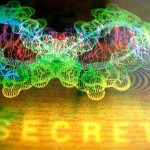
Wikimedia
The nexus of a large number of nanotech inventions, specifically related to personalized medicine, is biological material and other naturally occurring materials. In order to obtain a patent, the inventor is essentially required to create a new composition of matter from that which occurs naturally. Until recently, scientists and inventors alike have been able to satisfy this requirement, but change might be on its way.
In May 2009, the American Civil Liberties Union and the Association for Molecular Pathology filed suit, in the United States District Court for the Southern District of New York, against the United States Patent and Trademark Office and Myriad Genetics. The complaint pertained to patents that were granted on the BRCA1 and BRCA2 human genes that are mutations correlated to the increased risk of breast or ovarian cancer. Myriad Genetics designed a procedure to test for these mutations to indicate the likelihood of a woman developing either or both of the diseases. The complaint asserted that patents on genes should not be allowed because they are violative of § 101, patentable subject matter, of the Patent Act, namely all three of the judicially recognized exceptions to patentability: natural phenomena, laws of nature, and abstract ideas. Subsequently, the American Civil Liberties Union and the Public Patent Foundation filed a motion for summary judgment, in August 2009. On March 29, 2010, the District Court found that the isolated segments of DNA utilized for the diagnostic tests were “not markedly different from native DNA as it exists in nature” and held the patents granted to Myriad were not valid. Ass’n. for Molecular Pathology v. U.S.P.T.O., 702 F. Supp. 2d 181 (S.D.N.Y. 2010) available at http://www.aclu.org/files/assets/2010-3-29-AMPvUSPTO-Opinion.pdf.
This particular case involved the nature of medical tests utilized to screen women for the specific types of cancer. Myriad holds (held) patents on the two genes that indicate the likelihood of the woman developing cancer. Two main issues precipitated the litigation. First was the fact that Myriad charges more than three thousand dollars for its exclusive Comprehensive BRACAnalysis test. This exorbitant cost prohibited many women from being able to have the test, placing them at an increased risk of developing cancer. It was asserted that if Myriad would license the test, the cost would become more reasonable and allow for more women to benefit from the technology. This is the specific goal of personalized medicine; however that goal is more often thwarted by the exclusionary nature of patents (absent licensing and/or collaboration).
The second concern arose from those women who actually undergo testing and are delivered a positive diagnosis for possible development of cancer. Because Myriad held the patent on the test, the women were prevented from obtaining a second opinion to confirm the results prior to deciding to undergo preventative surgery. Examples of such prevention include radical mastectomies and ovarian removal surgery. The combination of these concerns cuts directly to the heart of the ongoing debate:
Should patents on biological material be allowed, and if so, what does that mean for the future of scientific research and the development of personalized medicine?
The precursor to this debate harkens back to the California Supreme Court case of Moore v. Regents of the Univ. of Calif., 793 P.2d 479 (1990), where the court was asked to decide if a cancer patient had any property rights in a commercially viable invention created from his particular cancer cells. The court ultimately decided that the plaintiff did not have any property rights in his biological materials because they considered the material discarded. The same debate takes place today with regard to human DNA, but no specific human has a specific property right to a specific segment of the human genome. As a result, scientists are able to use raw DNA and patents on genes are issued if the inventor/scientist has isolated a particular gene from its naturally occurring form, essentially creating a new composition of matter. However, in light of the decision in Myriad, the fate of thousands of patents (issued and pending) might be uncertain.
Of course, I will bring the focus back to the challenges awaiting nanotechnology in the fields of personalized medicine, molecular biology, etc. As I stated in the beginning of this post, the nexus of a large number of nanotech inventions is biological material and other naturally occurring materials. We know from the patentable subject matter paradigm, now including Bilski, that there still exists a broad spectrum of possibilities of what is considered a “new and useful process, machine, manufacture, or composition of matter, or any new and useful improvement thereof . . . .” 35 U.S.C. § 101. But, is there restriction on the horizon as a result of the Myriad decision? Only time will tell.

1 Trackback or Pingback for this entry:
[…] an earlier post, I wrote about the consternation surrounding patents on genes and the potential implications to the developing realm of nanotechnology. Recently, an amicus […]